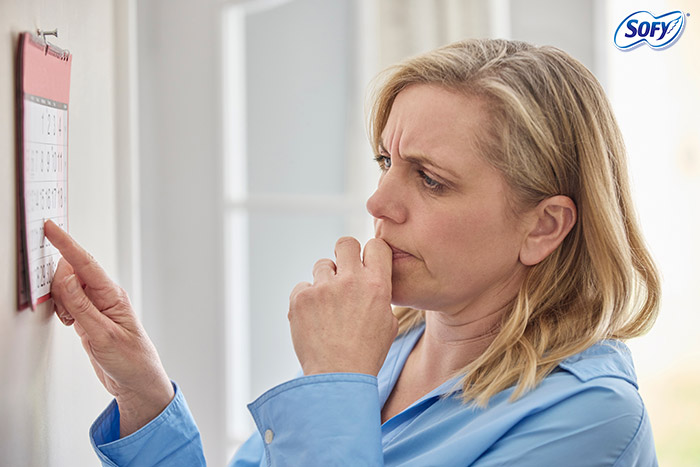Our menstrual cycles can feel like a total rollercoaster. One day you’re crying over a dog in a commercial, the next you’re ready to take on the world. And yes—you can thank your hormones for that wild ride. This blog breaks down the hormone changes that happen during your cycle, what’s normal, what’s not, and how to ride the wave without losing your mind (or your comfort).
Menstrual Cycle Explained
Your period isn’t just that one bloody week—it’s a full-blown hormonal journey with twists, turns, and emotional cliffhangers. A typical menstrual cycle lasts around 28 days (though anywhere between 21–35 days is normal), and it includes four main period phases:
1. Menstrual Phase (Days 1–5)
This is when your uterus says, “See ya!” to the old lining. Estrogen and progesterone levels dip during this phase, which can leave you feeling tired, cranky, or just plain meh. Totally normal.
2. Follicular Phase (Days 1–13)
This phase overlaps with your period and continues afterward. Your body starts prepping for a possible pregnancy. Estrogen levels begin to rise, and you may feel more energetic and motivated.
Hormone-wise, your body is bouncing back. If you notice some light discharge post-period, that’s completely normal. SOFY Pantyliners are perfect for these days—super light and comfy for everyday freshness.
3. Ovulation Phase (Day 14-ish)
Here comes the main event: your ovary releases an egg. Estrogen peaks—and so does your confidence. You might feel more outgoing, glowy, and in love with life. If you’re noticing more discharge, that’s totally expected. Your hormones are simply doing their thing.
4. Luteal Phase (Days 15–28)
Progesterone rises during this phase, which can bring bloating, mood swings, breakouts, and snack cravings. If you go from crying over nothing to demolishing your snack stash—yep, that’s textbook luteal phase behavior.
What’s Not Normal?
While hormone changes are natural, here are some red flags to keep an eye on:
- Periods that are very irregular (like skipping for months)
- Debilitating cramps or extremely heavy flow
- Severe mood swings that feel unmanageable
- Constant spotting or bleeding between periods
If you’re experiencing any of these, it’s best to consult a healthcare provider.
How to Handle the Hormone Rollercoaster Like a Pro?
Now that we’ve got the menstrual cycle explained, here’s how to not let it ruin your vibe:
- Track your cycle.
Use the SOFY Club App to stay on top of your cycle. Knowing which phase you’re in can help you prepare both physically and emotionally. - Stock up on the right products.
- Heavy flow? SOFY Bodyfit pads stay in place, absorb like a pro, and keep you leak-free.
- Need extra hygiene? SOFY AntiBacteria pads keep your skin dry and protected.
- On-the-go lifestyle? SOFY tampons give that magical “no-usage” feel—perfect for busy days.
Final Thoughts
Your hormones aren’t the enemy—they’re just doing their (sometimes dramatic) job. And when your body’s going through all the moods, SOFY’s got your back. From Bodyfit pads for heavy days to AntiBacteria protection and tampons for freedom and comfort, SOFY understands the twists and turns of your cycle.
So whether you’re bleeding, spotting, or just feeling off, there’s a SOFY product made exactly for that moment.
FAQ’s
2. What can I expect during the follicular phase?
Following your period, the follicular phase (Days 1–13) brings a rise in estrogen, which boosts energy, motivation, and confidence. Many people feel their best during this phase—productive, refreshed, and clear-minded. It overlaps with the end of menstruation as the body prepares for ovulation.
3. What happens hormonally during ovulation?
Around Day 14, ovulation occurs. Here, estrogen peaks and triggers the release of an egg. Many notice heightened confidence, mood uplift, and perhaps increased sociability. Some also experience light discharge—this is a normal part of the cycle and indicates fertility.
4. What mood changes can happen in the luteal phase?
The luteal phase (Days 15–28) sees progesterone rise, which may cause mood swings, bloating, cravings, and fatigue. Emotional sensitivity—such as irritability or tearfulness—is common and aligns with these hormonal shifts. While mild symptoms are normal, intense or disabling mood swings may need further support.
5. What signs during the cycle are not normal?
While minor shifts are common, consult a healthcare provider if you experience very irregular periods, debilitating cramps, extremely heavy bleeding, severe mood swings, or spotting between cycles. These may signal hormonal imbalance or underlying health concerns that need evaluation.
6. When should I see a doctor about menstrual changes?
Seek medical help if:
Your cycles are deeply unpredictable or skip months.
You have very heavy bleeding or pain.
You experience frequent spotting between periods.
Mood swings feel unmanageable.
Talking to a healthcare provider helps identify any underlying causes and guide treatment.
7. Can lifestyle affect hormone balance during the cycle?
Yes. Stress, poor sleep, imbalanced diet, and lack of exercise can disrupt hormone levels, affecting your energy, mood, and cycle regularity. Managing lifestyle—such as eating well, sleeping enough, and staying active—helps stabilize your cycle and reduces mood and physical disruptions.
8. Do hormone shifts affect emotions?
Absolutely. Rising estrogen during the follicular and ovulation phases often boosts mood and energy, while progesterone in the luteal phase can cause emotional dips. Many people find they feel more lively before ovulation and more moody or tired before their period.
9. What should I track to understand my cycle better?
Try keeping a diary or using a tracking app. Note cycle start and end dates, mood changes, energy levels, symptoms like bloating or cramps, and any spotting. Tracking helps you notice patterns, predict each phase, and identify what’s typical for you—making any unusual shifts easier to spot.
10. When changes are constant, what could that mean?
Persistent cycle irregularities—including missed periods, heavy bleeding, spotting, severe pain, or erratic moods—could indicate hormonal imbalance, thyroid issues, PCOS, or other conditions. Consulting a healthcare provider helps identify the root cause and guide proper care.

